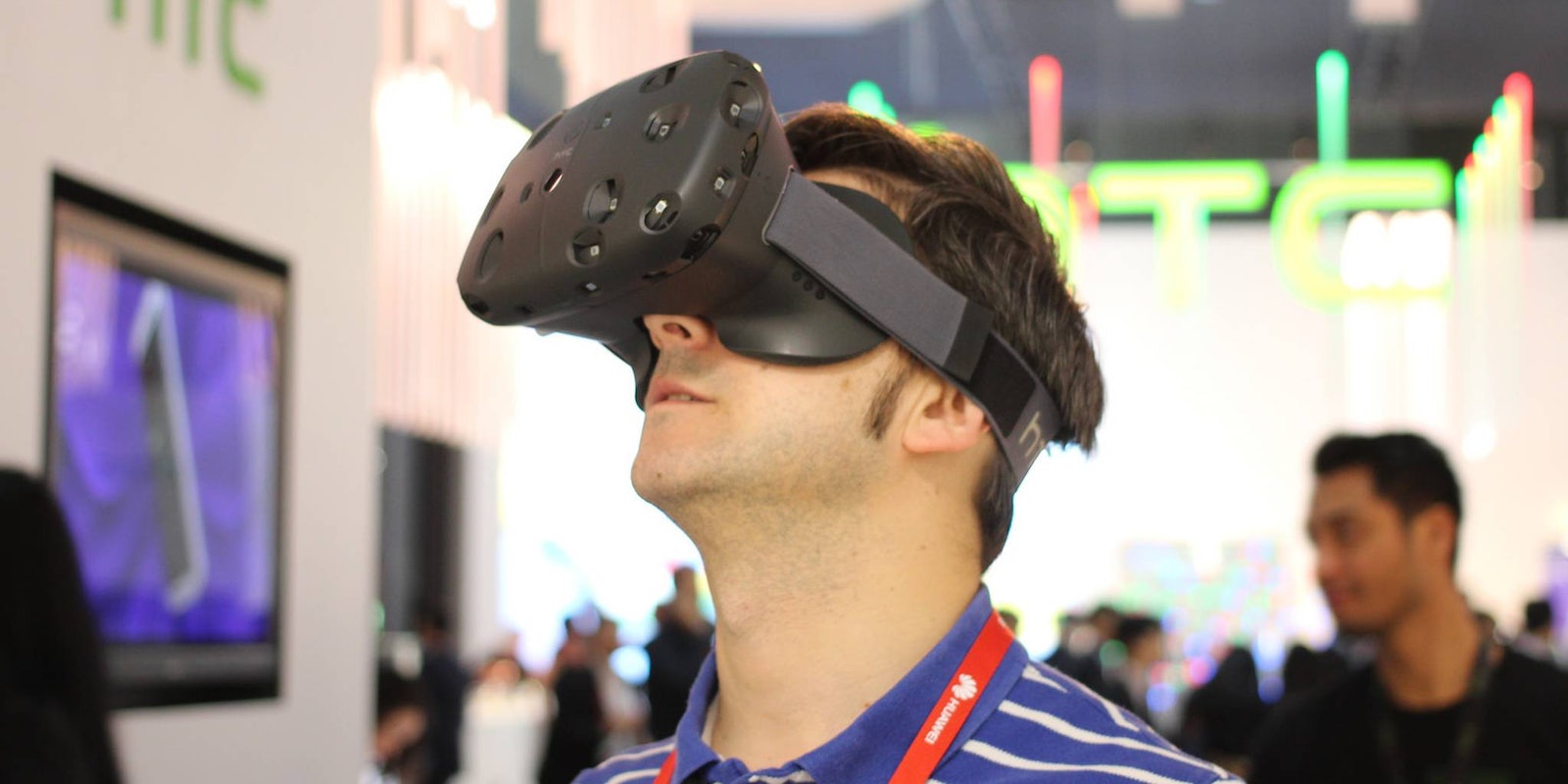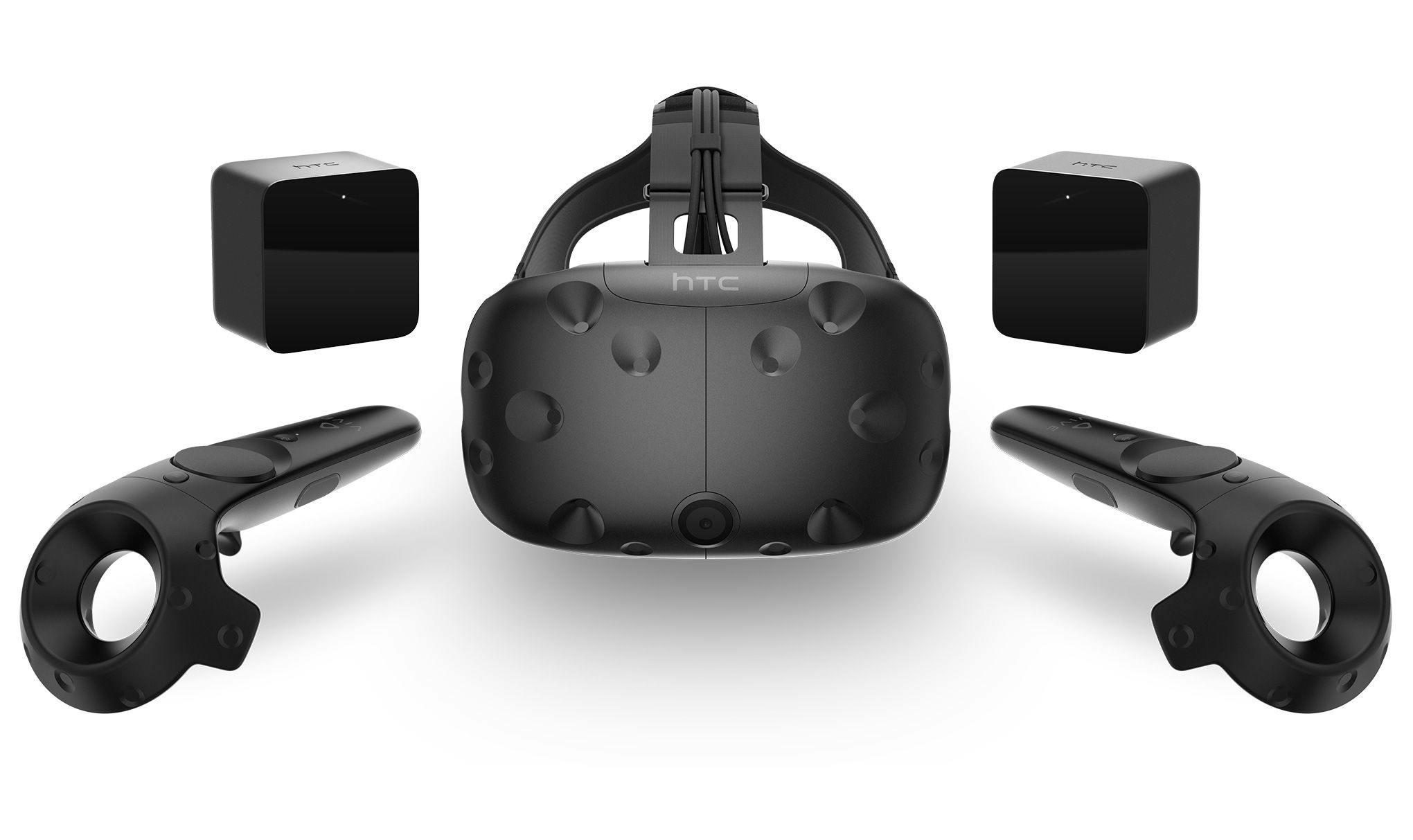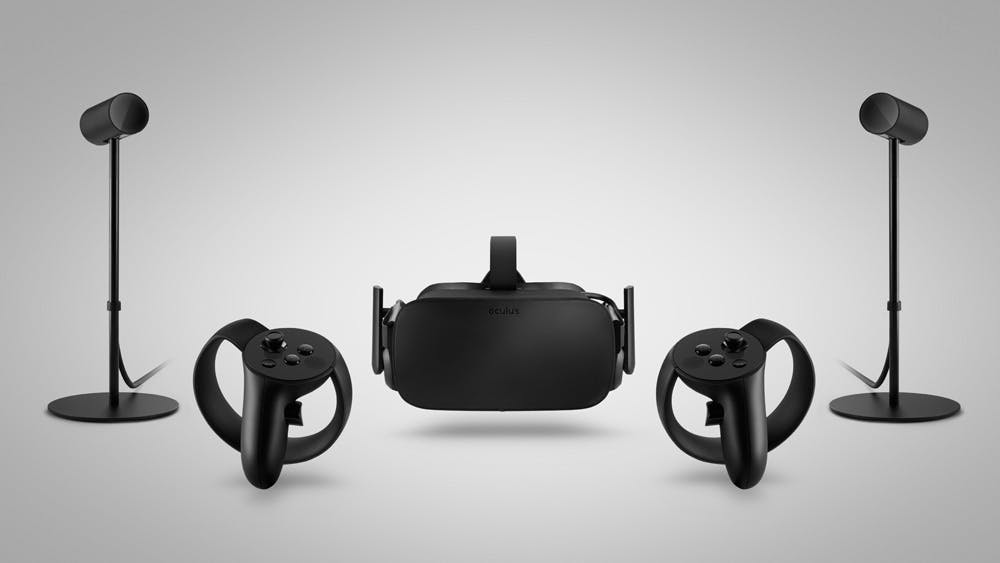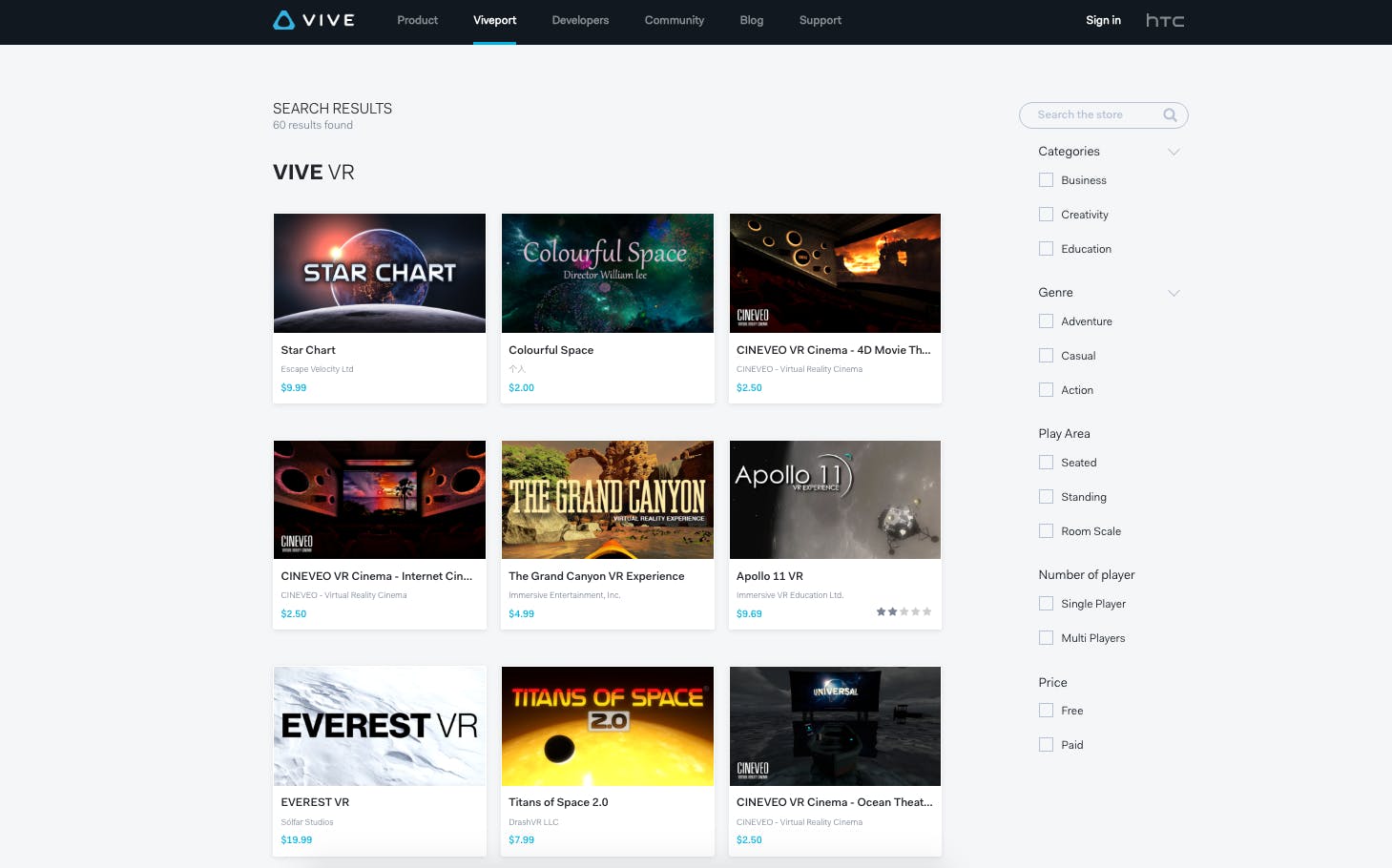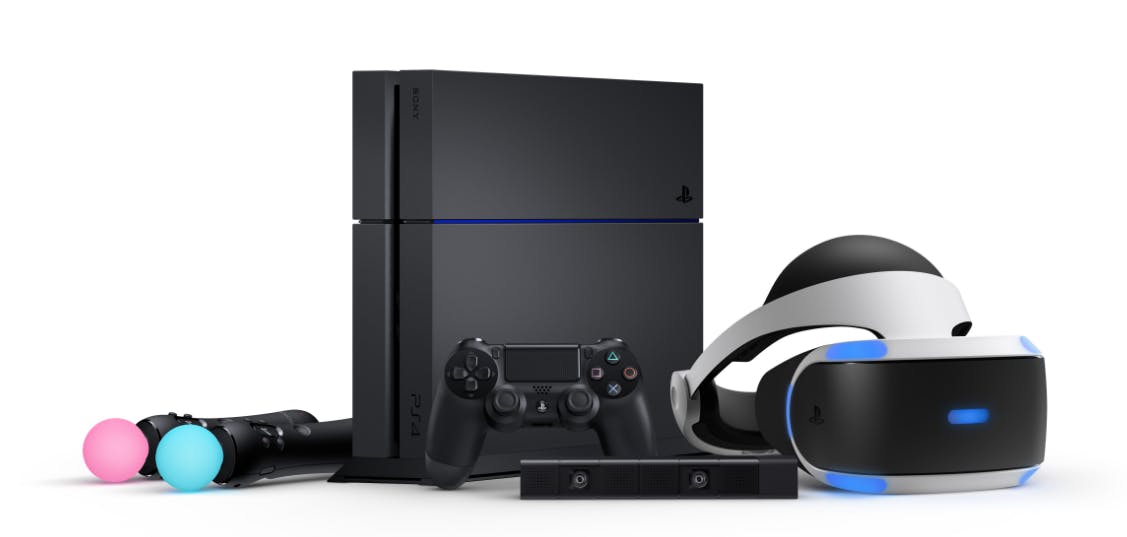In consumer technology, the two easiest paths to success are to be either first or best. Take smartwatches, for example: Pebble broke Kickstarter records because it was the first capable wearable in the category. Apple‘s wearable arrived late, but it’s universally considered to be the most powerful smartwatch on the market. Now the Apple Watch has an overwhelming market share, while Pebble does its best to hang on to its early adopters.
The very same thing is happening with virtual reality headsets.
Oculus vs. HTC
The Oculus Rift, another Kickstarter darling, is practically a household name, thanks in no small part to Facebook‘s acquisition of Oculus and the device’s long development time. The Rift was the first VR headset to prove that it could be taken seriously, but it’s not the best. That title belongs to the HTC Vive.
HTC’s Vive virtual reality headset is fast becoming the go-to hardware of choice for anyone who wants to go beyond Google Cardboard and experience the full potential of VR. The differences between the Rift and Vive are bigger than you’d guess by looking at them side-by-side. Display resolution, which is always the first thing users latch on to as a point of comparison, is an identical 1080 x 1200 per eye, with a 90Hz refresh rate.
Where the Vive separates itself is with its room-scale tracking and motion controllers. With the Rift, looking around, standing, and leaning a bit is the extent to which you can feel immersed in the virtual world. It’s impressive, but only until you experience the Vive’s room-scale VR tracking, which allows you to walk around the virtual world with your own feet. Combined with the Vive’s motion controllers, the system is capable of tracking intricate movements, letting you crouch behind cover in a war game, or walk 360-degrees around a virtual sculpture as you chip away bits of digital rock.
Oculus is planning to add room-scale VR support to the Rift by the end of the year, which will require additional movement sensors along with Oculus Touch motion controllers. No firm price or release date for these add-ons has been revealed, but it will likely close the gap between the Rift’s $600 cost and the $800 HTC Vive, which already comes with the sensors and controllers needed for the full-room experience.
Oculus’ woes
Aside from coming up short in capability, Oculus has another problem, and it’s one of timing. Developers have been working on Rift VR titles for years, and the more-capable HTC Vive debuted at a time when those developers were just reaching the limits of what the Rift was capable of in terms of tracking and “presence,” as they so often like to call it. Many made the switch to the Vive and haven’t looked back. In a VRDC poll released last month, more developers said they were working on Vive titles than for any other device.
Earlier this year, in an obvious attempt at holding on to the third-party developers who had been producing Rift experiences for months, Oculus began enforcing its headset-exclusive DRM policy that blocked Rift-enabled games from being played on the HTC Vive. It was a move born out of the simple fact that the Vive could do what the Rift does, and then some.
Developers, eager to make as much money and reach as many customers as possible, were outraged, and for good reason. Many felt that they were being punished for the limitations of the Rift, over which they had no control. The situation became so dire that Oculus grew tired of attempting to block Vive users and disabled the DRM restriction entirely.
SUPERHYPERCUBE will not be supporting Oculus. https://t.co/sqtAzZ8hJZ
— Polytron (@Polytron) September 23, 2016
The Oculus Touch accessories should, the company hopes, bring the Rift and Vive back into parity. Unfortunately for Oculus, it may no longer be a matter of hardware capability but of brand loyalty. On top of that, the recent news that Oculus founder Palmer Luckey was secretly funding a pro-Trump online trolling campaign has left many developers with a sour taste about the platform as a whole.
Viveport
Today, HTC launched another volley in the direction of Oculus with the launch of Viveport. Viveport, which has been available to developers for several weeks in its beta form, is home to Vive games and experiences that you can’t even find on the Steam marketplace, though there is a bit of crossover between the two as well.
For PC gamers, Steam has no real competitor, but Viveport doesn’t need to compete with Steam to gain an audience or help the Vive become the most popular VR device on the planet. Games and software can launch first on Viveport and still find their way to Steam at a later date, or vice-versa.
So, why would HTC and Valve want to split the market like this, when their jointly developed headset is clearly positioned to take over? To understand that, just ask yourself what exactly the market for VR really is. The short answer: Nobody really knows yet.
It might feel like we’ve all been hearing about virtual reality forever, but real, capable VR hardware only arrived on the scene in the past couple of years. The Vive’s Amazon launch just happened last week.
For gamers who want to wield virtual assault rifles and launch lasers from their fingertips, the Steam marketplace is already home. But what about everyone else? When the Nintendo Wii began to gain traction—before exploding into a cultural phenomenon—it quickly became clear that the people lining up at 2 o’clock in the morning to buy it weren’t your typical early adopters, and the same could be true once VR inevitably reaches critical mass.
For those non-gamers, putting another barrier between them and VR content is simply bad business. With Viveport, those customers can browse a huge library of content that they know will work with the device that they have, without having to filter out non-VR games or games designed for other hardware. Even its competitors’ Oculus store hosts content for both the Rift and the Gear VR headsets, meaning that seeing something cool doesn’t automatically mean it’s made for you.
Software on Viveport is universally accessible in more than 30 countries. Finding something interesting on Viveport is a matter of a mouse click, and the added bonus of region-free support is icing on the cake.
PlayStation VR (PSVR)
PSVR is the ultimate question mark in the virtual reality space. Using the most popular game console on the market—the PlayStation 4—as its base unit, the PSVR has a built-in advantage. It also uses the PlayStation Camera and PS Move motion controllers that many people already own, further lowering the barrier of entry and learning curve.
In terms of hardware specs, it’s comparable with the Rift and Vive, though the display resolution of the PSVR is slightly less than that of its competitors. It’s priced lower than the Rift and Vive as well, at $399, but where the PSVR really has the potential to shine is in its software.
PlayStation pulls some serious weight when it comes to developer loyalty, and big names are already lining up to support the PSVR either at launch or shortly thereafter. Batman Arkham VR, Eve: Valkyrie, and Resident Evil 7 will undoubtedly tempt many, many gamers into taking the VR plunge first on PlayStation, though we won’t know exactly how many until after the device’s Oct. 13 launch.
Just the beginning
It’s an exciting time to be a virtual reality fan. Whether you’re an Oculus Rift fan, an HTC Vive owner, or still waiting for the PlayStation VR to arrive before you make your decision, the competition in the market is pushing the industry forward faster than ever. The next 12 to 24 months will show us just who has the longevity and creativity to draw us out of the real world and into theirs.

